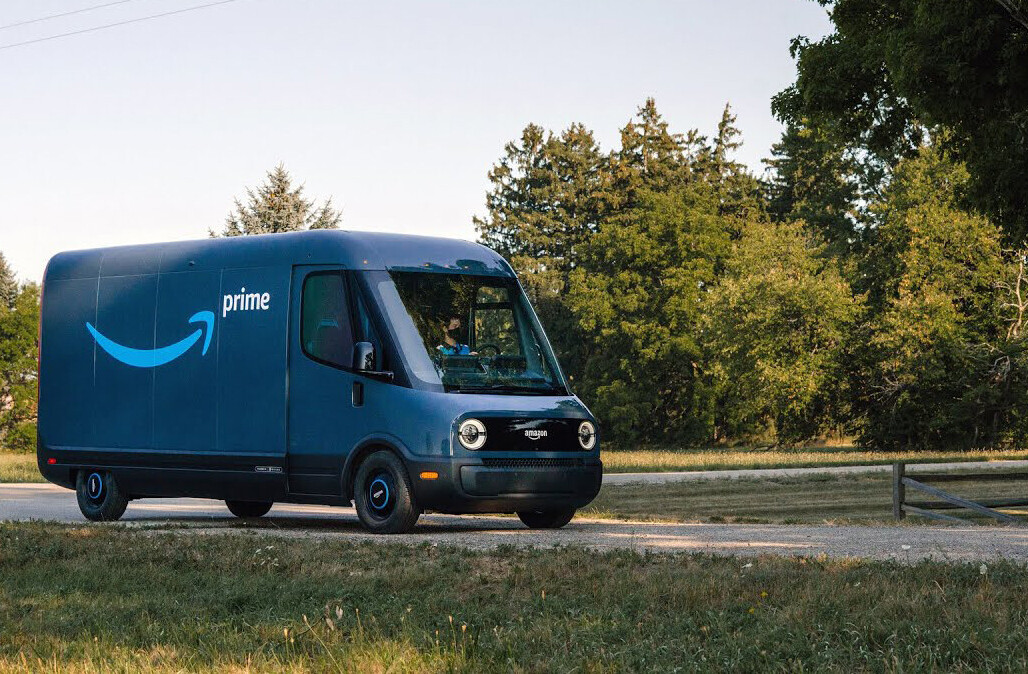
2015 introduced us to many new, exciting technologies. Advances in virtual reality and the widening adoption of smartwatches and other wearables are only the beginning. To get a started on what could shape the way we think in the coming year, I polled nine savvy business owners from YEC on the following:
Of all the technology introduced in the second half of 2015, what has the most exciting implications for business in 2016 and why?
Their best answers are below:
1. Google’s Project Loon
 Almost 4.3 billion people who live in rural areas will soon have Internet thanks to Google’s Project Loon. Sometime over the next year, Google will begin flying their large, clear, helium-filled balloons in areas with little-to-no Internet or mobile reception. The solar-powered electronics contained within these balloons will beam down high-speed cellular Internet coverage, bringing nearly 60 percent of the world’s population online for the first time. – Jessica Oralkan, Collecteurs
Almost 4.3 billion people who live in rural areas will soon have Internet thanks to Google’s Project Loon. Sometime over the next year, Google will begin flying their large, clear, helium-filled balloons in areas with little-to-no Internet or mobile reception. The solar-powered electronics contained within these balloons will beam down high-speed cellular Internet coverage, bringing nearly 60 percent of the world’s population online for the first time. – Jessica Oralkan, Collecteurs
2. Accelerated mobile pages project (AMP project)
 Google is leading the charge in building a new mobile framework for speed. This would allow publishers to deliver their content natively inside any app, lightning fast. Media companies like BBC, The Guardian, BuzzFeed, Time Magazine, The Wall Street Journal and several others are already on board. This is a big win for publishers, but even more importantly for users, because it will significantly improve the overall user experience. – Syed Balkhi, OptinMonster
Google is leading the charge in building a new mobile framework for speed. This would allow publishers to deliver their content natively inside any app, lightning fast. Media companies like BBC, The Guardian, BuzzFeed, Time Magazine, The Wall Street Journal and several others are already on board. This is a big win for publishers, but even more importantly for users, because it will significantly improve the overall user experience. – Syed Balkhi, OptinMonster
3. Mobile payments
 Although introduced much earlier than 2015, we’re finally starting to see a surge in support for mobile payments, with Apple, Android and now Microsoft making mobile payments easier and more accessible to the non-savvy consumer. Using the Apple Watch, iPhone, Microsoft’s new smart watch solution, or any of the numerous Android devices that support these technologies, we’re finally seeing consumers make the choice to keep their cards in their pockets, or better yet, at home. – Blair Thomas, EMerchantBroker
Although introduced much earlier than 2015, we’re finally starting to see a surge in support for mobile payments, with Apple, Android and now Microsoft making mobile payments easier and more accessible to the non-savvy consumer. Using the Apple Watch, iPhone, Microsoft’s new smart watch solution, or any of the numerous Android devices that support these technologies, we’re finally seeing consumers make the choice to keep their cards in their pockets, or better yet, at home. – Blair Thomas, EMerchantBroker
4. Live streaming
 The release of Blab.im, Periscope and Meerkat have all reduced friction enough that online live streaming is finally taking off. Ustream and Google hangouts have been around for five or six years but aren’t mobile specific. I see a huge trend for businesses to offer live Q&A sessions to better connect with clients and potential clients using these platforms that satisfy people’s on-the-go mobile preference. – Joshua Lee, StandOut Authority
The release of Blab.im, Periscope and Meerkat have all reduced friction enough that online live streaming is finally taking off. Ustream and Google hangouts have been around for five or six years but aren’t mobile specific. I see a huge trend for businesses to offer live Q&A sessions to better connect with clients and potential clients using these platforms that satisfy people’s on-the-go mobile preference. – Joshua Lee, StandOut Authority
5. Virtual Reality showrooms
 Virtual reality (VR) technology being released by Oculus Rift , Microsoft and Sony — as well as VR creation tools from Nokia and GoPro — will change the way consumers shop. As web purchasing increases in 2016, VR Showrooms linked from commercial websites will allow consumers to view products in a similar way as they would a physical showroom, and without leaving the comfort of their home. – Peter Bonac, Bonac Innovation Corp.
Virtual reality (VR) technology being released by Oculus Rift , Microsoft and Sony — as well as VR creation tools from Nokia and GoPro — will change the way consumers shop. As web purchasing increases in 2016, VR Showrooms linked from commercial websites will allow consumers to view products in a similar way as they would a physical showroom, and without leaving the comfort of their home. – Peter Bonac, Bonac Innovation Corp.
6. Wearables
 In 2016 we are going to see a lot more implementation of wearables in the workplace. In 2015, we saw enterprise adopt more cloud-based platforms such as Salesforce as well as more mobile apps and tools for employees. In 2016, with 1.9 billion devices contributing to the Internet of Things, wearable solutions such as Google Glass for enterprise, smartwatches like Apple Watch and wearable controls like Myo will be tested in the workplace. Deep analytics generated by these devices will help businesses make their processes smarter, which will lead to a happier and more productive workforce. – Ankur Gopal, Interapt
In 2016 we are going to see a lot more implementation of wearables in the workplace. In 2015, we saw enterprise adopt more cloud-based platforms such as Salesforce as well as more mobile apps and tools for employees. In 2016, with 1.9 billion devices contributing to the Internet of Things, wearable solutions such as Google Glass for enterprise, smartwatches like Apple Watch and wearable controls like Myo will be tested in the workplace. Deep analytics generated by these devices will help businesses make their processes smarter, which will lead to a happier and more productive workforce. – Ankur Gopal, Interapt
7. Home batteries
 Tesla home batteries, a wall battery that charges using electricity generated from solar panels (or when utility rates are low), lets you power your office in the evenings and fortifies offices against power outages by providing a backup electricity supply. Electricity storage has been a huge problem for a long time, which is why it’s taken so long for solar power to take off. There simply hasn’t been a good way to store the excess power generated. But now, Tesla batteries are being used to power office buildings in California, and they’ll soon be installed all over the US. –Mattan Griffel, One Month
Tesla home batteries, a wall battery that charges using electricity generated from solar panels (or when utility rates are low), lets you power your office in the evenings and fortifies offices against power outages by providing a backup electricity supply. Electricity storage has been a huge problem for a long time, which is why it’s taken so long for solar power to take off. There simply hasn’t been a good way to store the excess power generated. But now, Tesla batteries are being used to power office buildings in California, and they’ll soon be installed all over the US. –Mattan Griffel, One Month
8. Amazon Dash
 I consider this button a very early version of a product that would change how advertisers would target consumers. Currently, the whole process is not very sophisticated technologically. But imagine a world where machines can directly place orders for you based on your product consumption trends, and advertisers give you coupons not on your mobile or desktop but on your actual machines. Amazon has started something that would lead to many more devices that an advertiser could target consumers on. – Shilpi Sharma, Kvantum Inc.
I consider this button a very early version of a product that would change how advertisers would target consumers. Currently, the whole process is not very sophisticated technologically. But imagine a world where machines can directly place orders for you based on your product consumption trends, and advertisers give you coupons not on your mobile or desktop but on your actual machines. Amazon has started something that would lead to many more devices that an advertiser could target consumers on. – Shilpi Sharma, Kvantum Inc.
9. Twitter content in Google
 With the recent deal in place with Twitter, Google has gained access to crawl the vast database of Twitter’s real-time content. Expect further integration of Twitter content into search engine results pages (SERP) in 2016, with an emphasis on news and events. Tweets and Twitter profiles present opportunities for businesses to get on top of Google and win more real estate with a sound Twitter strategy. News content is an obvious win, but businesses should also optimize for hashtags, which are increasingly used as keywords. With the descending influence of G+ on SERP, Twitter is a platform to watch. – Matthew Capala, Search Decoder
With the recent deal in place with Twitter, Google has gained access to crawl the vast database of Twitter’s real-time content. Expect further integration of Twitter content into search engine results pages (SERP) in 2016, with an emphasis on news and events. Tweets and Twitter profiles present opportunities for businesses to get on top of Google and win more real estate with a sound Twitter strategy. News content is an obvious win, but businesses should also optimize for hashtags, which are increasingly used as keywords. With the descending influence of G+ on SERP, Twitter is a platform to watch. – Matthew Capala, Search Decoder
Read next: Why you won’t recognize SEO in 5 years
Image credit: Giphy
Get the TNW newsletter
Get the most important tech news in your inbox each week.





